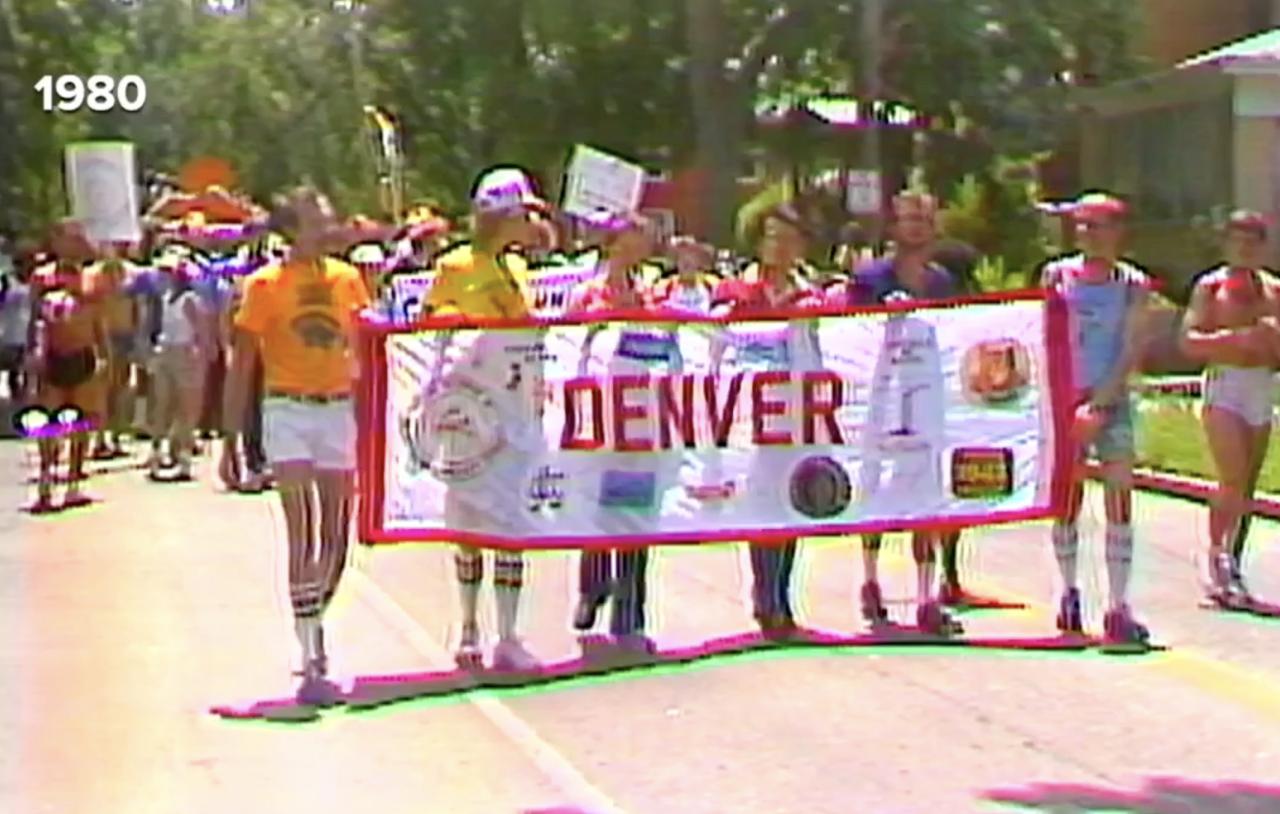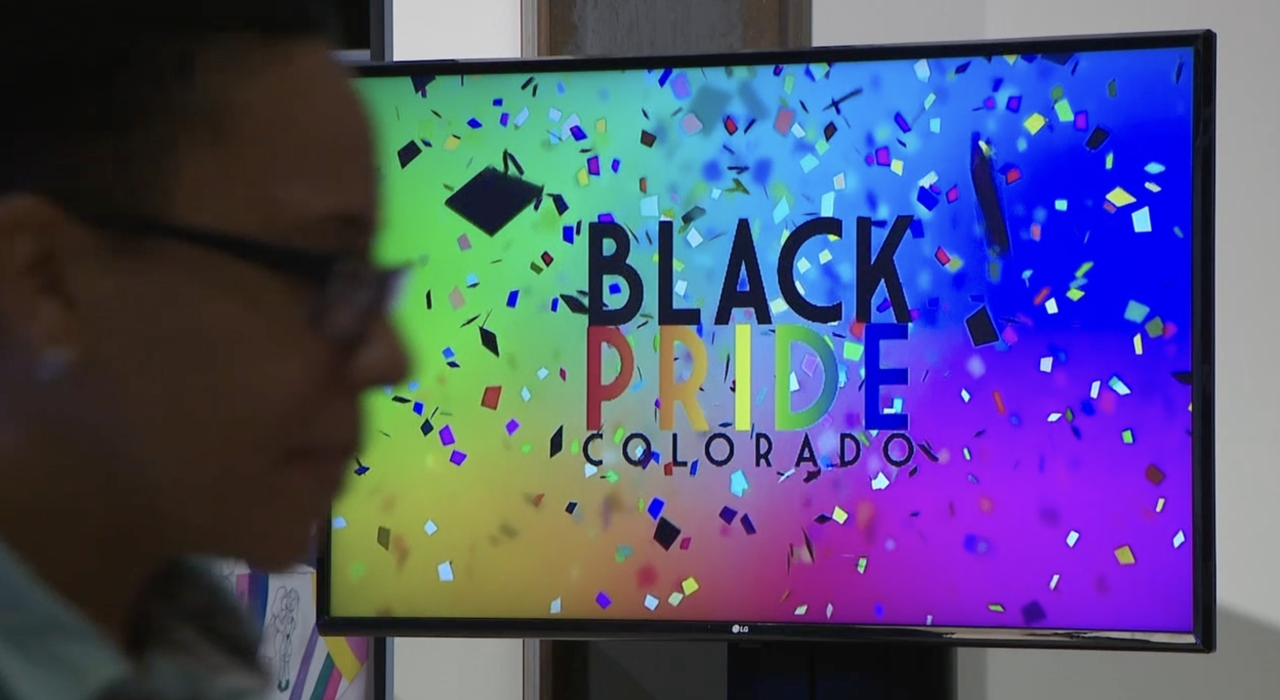DENVER — A man holds a sign painted with the words “Gay Pride” in one hand, as others hold similar signs and balloons. In June 1974, about 50 gay rights activists gathered at Cheesman Park in Denver in what would be deemed the first Pride celebration in the city.
This June marks 50 years since that day, and the celebration has since grown into a weekend-long celebration called PrideFest, drawing thousands of participants.
But long before PrideFest 2024 and years before the 1974 demonstration at Cheesman Park, LGBTQ+ Denverites and Americans across the country were watching riots unfold at the Stonewall Inn, a gay club in New York City’s Greenwich Village.
The beginning
In the summer of 1969, LGBTQ+ Americans across the country watched as patrons of the Stonewall Inn fought back against violent police raids in New York City. Historians cite this event as a catalyst for the gay rights movement, and in Denver, gay rights activists were paying close attention.
“Pride was created in the first-year anniversary of Stonewall in 1970 and within about 10 years, Prides were celebrated across the United States,” said David Duffield, coordinator for the History Colorado LGBTQ History Project at the Center on Colfax. “In Denver, the first Pride was in 1974 in June. It was six months after the Denver Stonewall moment, which was when Denver City Council met with a group called the Gay Coalition of Denver.”

The Gay Coalition of Denver protested local discriminatory laws targeting LGBTQ+ community members.
“On Oct. 23, 1973, they met with the City Council, and 300 people from Capitol Hill protested and got the city council to listen to them for the first time," Duffield said. "The beautiful part about this was that it ended five anti-gay laws, including anti-cross dressing laws and things which had been on the books for almost 100 years. They got their first political allies, and in terms of Denver Stonewall moment, it was in that great American tradition of democratic engagement, of people speaking with their leaders, talking about what they needed, and the city leaders listened."
In 1976, Denver would experience its first Pride parade.
“There was a theatrical group in town called the Toby Foundation… At a Toby meeting, somebody said, 'How come we don't have a parade like they have in New York?'I said, ‘I don't know, but I’ll go see if we can find out,'" said Christopher Sloan, whose stage name is Christi Layne. "So, I wandered down to the office of the city manager and told them that we wanted to have the civil rights march or parade and how did that happen? And it was a very nice older woman and she walked me through the processes and what was required."
Sloan said he was hesitant to tell the city employee the parade was for gay rights because despite progress, discrimination was still common place.
Sloan said his fears came to fruition when just days before the parade he still had not received the parade permit, so he went back to the city manager’s office.
“She (the city employee) said, ‘I'm sorry, we just decided that we're not going to allow this’ … And that same evening, I called a friend and said 'Do we know anybody in government who could help us?' He said, 'We know an admin in the governor's office,'" Sloan said. "So, I call the governor’s office. I get a call back two days later from the governor's office. And they, the gentleman on the phone, I have no idea who it was, said to me, 'You can go ahead and do your march.' And the gentleman brought the permit, brought four sheriff's cars and two unmarked cars… So the first which was to be a march parade, became the first time we were able to parade down the street.”
Sloan, who officially became the first person in Denver to apply for and receive a permit for a Pride parade in Denver, said the event led to increased unity with the LGBTQ+ community.
“All of us were starting to work together to solve issues to see what we could do. And one gentleman in town, Richard Reid, threw a (drag) show and raised $35 to have somebody sit at a desk that you could call and say, ‘I need an STD test,' or 'Is there a lawyer that I need help with?' Or 'I'm having a problem with my landlord, or what can we do?’ Because there was nothing for us. So that $35 turned into the Center, which is now a multi-million-dollar building and little more than a dozen employees,” Sloan said.
The Center, officially known as the Center on Colfax would continue to play pivotal role in keeping Pride celebrations alive.

Pride during the AIDS pandemic
“I'm sad to say that in the 80s, Pride really started to decline, partly because so many people were losing their lives from AIDS and HIV," said Rex Fuller, CEO of the Center on Colfax. "So, on the 20th anniversary of Stonewall in 1989, it was probably about 100 people who rallied on the west steps of the Capitol in Denver, and that was pretty much it. Well, actually, the first time that I went to a Pride event was the 1989 Pride and it was kind of, in some ways, a letdown, just to be honest. So it got me involved in trying to help revitalize it."
In 1990, the Center on Colfax began producing PrideFest.
“We had about 10,000 people march in the parade that first year, and it's continued to grow ever since,” Fuller said.
The Center continues to produce PrideFest today and it serves as its largest annual fundraiser.
The legislative fight
In 1993, the United States adopted a policy called “Don’t Ask, Don’t Tell," essentially banning openly gay Americans from military service,. The policy sparked protests at Pride celebrations across the country, including in Denver.
In 2010, the policy was repealed and in 2015, the LGBTQ+ community saw a legal victory when the U.S. Supreme Court legalized gay marriage.
This happened right after the Pride festival in Denver.
“It was really interesting because a lot of times Supreme Court decisions come out at the end of June," Fuller said. "And that particular year… it was the first time that we had worked with Lonnie Hanzon, who's a Denver artist too, who's done work all around the world. But he created a 24-foot-tall wedding cake in the center of Civic Center Park. And part of that art piece also listed I think, it's 1,138 rights and responsibilities that come with marriage, according to the Government Accounting Office."
It was a cool way to walk about the gay marriage issue, Fuller said.
“Lonnie had created this giant wedding cake," Fuller continued. "And it was the week after that huge Pride celebration that the Supreme Court decision came out. So there was a big rally on the west steps of the Capitol. There's always a big rally on the west steps of the Capitol. But Lonnie was able to bring parts of this giant wedding cake down to the Capitol to celebrate.”

Inclusion at Pride
In 2021, the nonprofit YouthSeen and several other organizations hosted Denver’s first Black Pride celebration.
“I moved here in 2017 and I saw it immediately. I think even coming here, I knew what I was walking into. But there was this this moment, I want to say in like 2018, where all of a sudden it was like there's actually a lot of BIPOC folks here, like there's a lot of folks of color here. But also, I thought, where's our spot? Coming from New York, there was always a spot where I knew that I could connect with other community members. And I wasn't really seeing that here,” Dr. tara jae (they/them), executive director of YouthSeen and founder of Black Pride.
Dr. jae said in 2020, they started brainstorming ways to create space for queer people of color during Pride, leading to the inaugural Black Pride Colorado celebration.
“Black Pride Colorado is a space for a gathering, where the focus is on Black queer folks, but it's for folks of color as a whole, and it is also to speak into the whiteness that is queer Colorado,” Dr. jae said. “I think one of the big reasons why Black Pride in Colorado came to be was that I could see the struggle of folks of color within mainstream Pride… And that is not to take away what Denver Pride has done. I feel like there's always room, there always needs to be room for other voices… Trans, non-binary, you know, asexual, all of the identities.”
Fuller said Pride should include as many voices as possible.
“I think there's always is a chance to be more inclusive and to look at ourselves and find out how we can include more groups of folks,” Fuller said.
Reflections and lessons
“A few years ago, I remember being at the corner of Colfax and Broadway because you can look up the hill and see the parade start to come over the hill by the State Capitol," Fuller said. "And there's just thousands and thousands of people and as many rainbows as you can possibly come up with. And it just started coming up over that hill. And one of the volunteers came up next to me and she was looking at that, and just kind of said, 'Wow.' And she turned to me and she had tears in her eyes and said 'Look at what we can do,'” Fuller said.
Duffield said every year, Pride reminds him of the collective effort it has taken to make Pride what it is today.
“I think it's possibly the greatest part of human beings to look into each other's eyes and look out into the world and to claim that their humanity is greater than the way that they're being treated. The success of Pride isn't the function of one person or one small group of people. It's the function of generations of people coming together to create a space for themselves,” Duffield said. “My first Pride was in 2000 or 2001 but everyone can say that same word. My first Pride was 'blank,' and that's the result that 'blank.' Pride is the result of dedicated people talking about their lives and saying, 'We are here. We're queer. Get used to it.'"
Fuller said it’s important to remember every year is somebody’s first Pride and every year the goal is to make sure all participants feel seen, included, and experience the actual feeling of Pride as they celebrate their identities and continue to protest inequalities.




